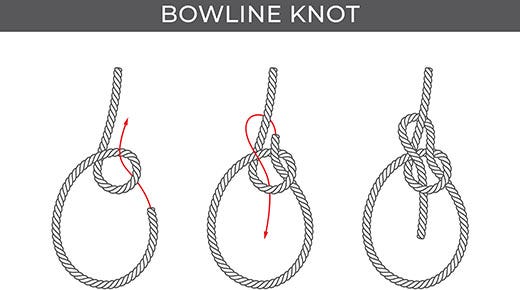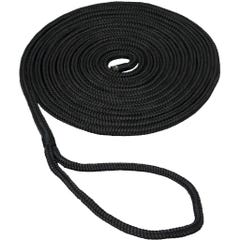Five Basic Boating Knots You Really Should Know
June 02, 2022 4 min read


Tell the truth — how many different knots do you use boating? For most boaters, the answer is two or maybe three, counting a cleat hitch, which is the actual name of the knot used to attach a line to a cleat. The fact is that most of us know and use more fishing knots than we do boating knots. And we get by just fine that way.
Contents
Five Basic Boating Knots To Know
On most recreational boats under 30 feet or so, the only lines on board are an anchor rode, a few dock lines (usually with an eye spliced into one end), and maybe a ski rope. If you can tie to a cleat and a piling or railing when a cleat isn’t available, you’re set for the vast majority of situations you’ll encounter operating a trailerable powerboat.
Still, knots are fun to learn, and knowing just a handful of simple ones can come in very handy when something unexpected happens. Fortunately, it takes a few seconds on Google to find detailed, illustrated instructions for any knot, bend, or hitch ever devised by humankind. The real question is which ones to start with. Here are five to know by heart.
Cleat Hitch
There is, in fact, a right way to tie a dock line to a cleat. There are also a whole lot of wrong ways.
Most of the wrong ways also work reasonably well, but if you’re leaving your boat for an extended period of time or in challenging conditions, do it right.


Important Things to Notice
1. If your dock line is at an angle to the dock, go around the far side of the cleat first.
2. Take at least half a turn around the base of the cleat, as shown in the NetKnots illustration, before going over the middle. For a more slip-resistant hitch, take a full turn around the base before starting your first figure-eight, as shown in this animation.
3. A single figure-eight locked with a half-hitch is plenty. Many new boaters keep wrapping and wrapping until they’ve buried the cleat under a big ball of rope. That doesn’t do any good. Keep it simple and neat.
Clove Hitch
Another “short-term” knot, the clove hitch is quicker to tie, lower profile, and takes up less line than a round turn with two half-hitches. Clove hitches can slip — especially when not under tension — but they’re still a nifty way to tie off quickly to a rail or bar. They have the added advantage of being easily adjustable, which makes them ideal for things like hanging fenders from a railing.


You can make a clove hitch more secure by throwing a couple of half-hitches around the standing part with the tail. Or, substitute a rolling hitch, which is basically a clove hitch with one extra turn, making it a little more resistant to slipping.
Bowline
A bowline can be used either to form a loop in the end of a line or to tie a line around a piling or rail. Lots of knots can do the same things, but what’s special about a bowline is that it doesn’t slip and doesn’t tighten under load nearly as much as other knots, making it easy to untie. Those qualities make bowlines ideal for towing and similar applications where lines are under sustained tension.


For instance, use a bowline to tie a tow line to your bow eye. Boats tow better when the tow line is attached to the bow eye rather than to a cleat on deck. Or, if you want to anchor close to shore with your bow out, use a bowline to tie your stern line to a tree so you won’t have to struggle to get it untied.
Sheet Bend
Probably the least commonly used of these five knots, the sheet bend is still valuable to know. It’s used for tying the ends of two pieces of line together and, unlike the many other knots that can do essentially the same thing, the sheet bend works well even with two lines of very different sizes.


It’s handy for things like tying dock lines together to make a longer line for rafting up, extending towing or anchor lines, etc. If you’re connecting two lines of different diameter, put the hitch in the smaller diameter line.
Round Turn with Two Half-Hitches
Probably the most frequently used knot among boaters after the cleat hitch, a round turn with two half-hitches is a quick, simple way to tie dock lines off to pilings or railings when cleats aren’t available. You don’t want to leave your boat moored overnight this way, but for tying up to the dock while you grab the truck — or even lunch — it’s plenty secure.
Note that without a full turn around the piling, as shown in this animation, this knot isn’t worth much. Add additional turns for more security.
Pro Tip: A Knot is Only as Strong as the Rope Used to Tie it!
Having top-notch marine-specific lines and ropes make tying these knots much easier. A high-quality rope is going to be more subtle and durable, making the knot not only easier and faster to tie but much stronger.
We took the time to explore a wide variety of marine lines and have our own private labeled brand of dock line and anchor rope. Both rope options are good for a wide variety of uses both on the boat or dock, and great to practice your knot-tying with!


